Therapies
Swedish / Holistic Massage
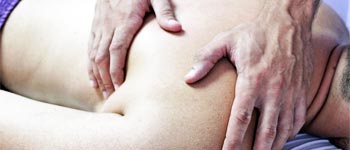
This is your everyday classic massage, and is the base point for every other variation of massages that exist.
It uses a combination of light and firm pressure, and long and short strokes, as well as other techniques, such as kneading.
This massage focuses on massaging the superficial layers of the body, and pressure shouldn’t reach further than what is known as the fascia (connective tissue that surrounds all your organs, bones, tendons, ligaments and muscles).
Swedish massage is a great all-round relaxing treatment.
Reflexology
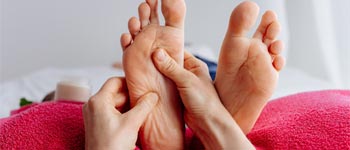
Is a truly masterful treatment when you consider what it actually does.
Simply put, we have pressure points and zones within our feet and hands that correspond to all the various systems within our bodies, including all the organs and glands.
By stimulating these, we are able to encourage the body to activate its own natural state of healing.
Reflexology, although not to be used as a diagnostic tool, can pick up various blockages within our bodies, and can assist with many ailments.
Reflexology can be used as an add on treatment or a management tool for a wide variety of complaints such as fertility issues, headaches and digestive problems.
Reflexology can also be done on the hands and ears, but the feet are most commonly used.
Reiki
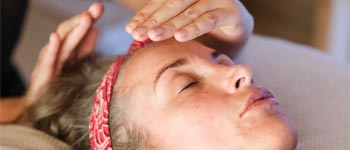
Simply put, this is energy healing, and is AMAZINGLY relaxing.
What I truly love about reiki is hearing clients’ feedback after a treatment.
Some people report seeing colours, or symbols, or even getting a profound message to a problem they’ve been having.
The energy is channeled through the therapist’s hands and into the recipient’s chakras and other areas of the body that need balancing and/or healing.
How is this done?
Reiki uses intention, symbolism and attunement in order to help balance a person’s chakra’s.
Reiki uses the therapist’s hands to convey the energy, and this can be done by touching the person’s skin or by just resting the hands slightly above the person’s body.
In my reiki treatments, I utilize a pendulum as well as crystals, which is a wonderful addition, and intensifies the healing energy sent through.
Indian Head Massage
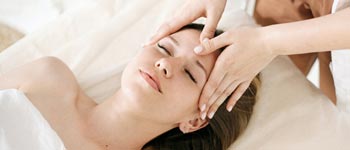
This massage is a literal ‘melt into heaven’ massage.
My personal favourite massage when I need to relax, this massage comprises typical Swedish techniques, however deeper pressure with the knuckles can be applied to say, the shoulders if you are struggling with tension.
Our Indian Head Massage will include your neck, shoulders, face, ears, scalp and hair.
This is an AMAZING treatment to have if you struggle with tension headaches and / or sinus, in which case we customize further to include the pressure points of the face and under the occipital areas.
This customization has proved a great success in all my clients who’ve struggled with tension headaches in the past!
Manual Lymphatic Drainage (MLD)
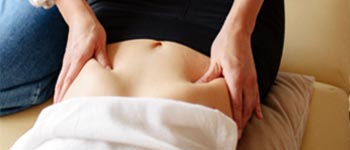
This treatment is mainly used for people who have either oedema or lymphedema.
However, it can also be used for things such as detox, sluggishness, brain fog, recovery after colds and flu, post pregnancy swelling, skin tone and cellulite management.
It uses extremely light strokes and pumping movements to convey the fluid to the points of filtration and drainage, otherwise known as lymph nodes.
The lightness of the treatment is due to the lymphatic vessels sitting only 1mm under the skin.
K-tape is not always necessary with MLD and will not always be used.
I do three different types of MLD:
- Classic MLD: which is used for the things mentioned above, such as fatigue, detox, brain fog, mild cases of swelling from pregnancy, travel or post colds and flu.
- Pre-Op MLD: which is used in preparation for surgery. It will help to clear away excess fluid and waste, making the surgery site easier and cleaner for the surgeon to operate on.
- Post – Op MLD: which is used for people who have had surgery, and are struggling with oedema and bruising.
- MLD is very much an accumulative treatment, and it is imperative that you understand that a minimum of 3 treatments are needed before you'll see changes.
- For clients who have had surgery, a minimum of 6 treatments are needed.
- Please kindly note that I am not a Lymphedema specialist. I can gladly assist you with MLD for lymphedema, but you have to also be under the care of a lymphedema specialist who can assist you with lymphedema care. Lymphedema specialists can be sought through the NHS or privately.
Stress Relief Package
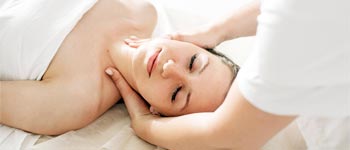
This package has been put together for those who want to indulge in a bit of self care.
Choose three treatments and they will all be packed into your choice of either 90 minutes or 2 hours!
90 minutes includes:
- Back, neck and shoulder massage (swedish, deep tissue, hot stone)
- Choose two of the following: reiki, reflexology or indian head massage
2 hours includes:
- Full body massage (swedish, deep tissue, hot stone)
- Choose two of the following: reiki, reflexology or indian head massage
Deep Tissue Massage
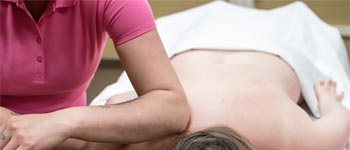
This massage requires the therapist to break through the superficial layers of the skin, and down through the fascia (connective tissue surrounding all organs etc.) to where knots have formed, due to injury or tension.
In order to work these knots out, and give you a greater range of movement, a very firm pressure needs to be applied.
The massage begins with stretching the skin, and a few Swedish massage techniques to warm up the muscles, then techniques with the knuckles and elbows are used to break down through the fascia and into the knot.
Because of the deep pressure, certain parts of a deep tissue massage can be painful. However, it should not be unbearable, and pressure can always be adjusted until a more tolerable pressure is reached.
Obviously, everyone is different and will benefit from massage individually, however, more often than not, most people feel the benefits of deep tissue massage after just one treatment!
*Sometimes, if a client has a very stubborn knot, or has a lot of tension build up, I will use Myofascia release techniques, in addition to deep tissue massage techniques*
How does Deep tissue Massage differ from Sport Massage?
Hot Stone Massage
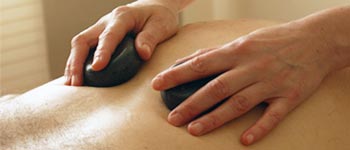
This type of massage can be done using Swedish or deep tissue techniques, but it uses hot stones as the main tool for massage.
The stones used are basalt stones, as these retain the most heat for the longest.
Hot stone massage is great for people with sore muscles, as the heat helps to loosen tension.
It’s also a good choice for people who cannot handle deep tissue massage, but still need the knots and tension worked out.
In the winter months, hot stone massage is a great all-round relaxation treatment!
- Please note that I do not do hot stone massages in the summer months
Kinesiology Taping
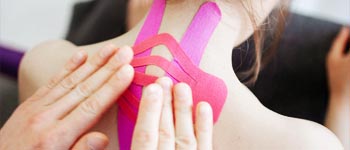
Also known as K-Taping, this is usually an add on treatment for Manual lymphatic drainage clients.
The tape creates space between the skin and muscle, aiding in continued flow of the lymph and blood.
Apart from this, K-Taping is a wonderful way to help reduce swelling and bruising. It also helps support joints and reduces pain, making it a great aftercare tool.
The tape is water resistant, and feels very light on the skin.
Occasionally, I also use it for deep tissue massage clients who have a lot of muscle tension.
This helps facilitate blood flow and aids better movement of the muscle. It also supports and lengthens the muscle.
K-Taping is not always essential in an lymph drainage but if I feel you would benefit you will get the first one free.
Please do not book any re-taping unless we have applied tape in your first Lymph Drainage Treatment.
